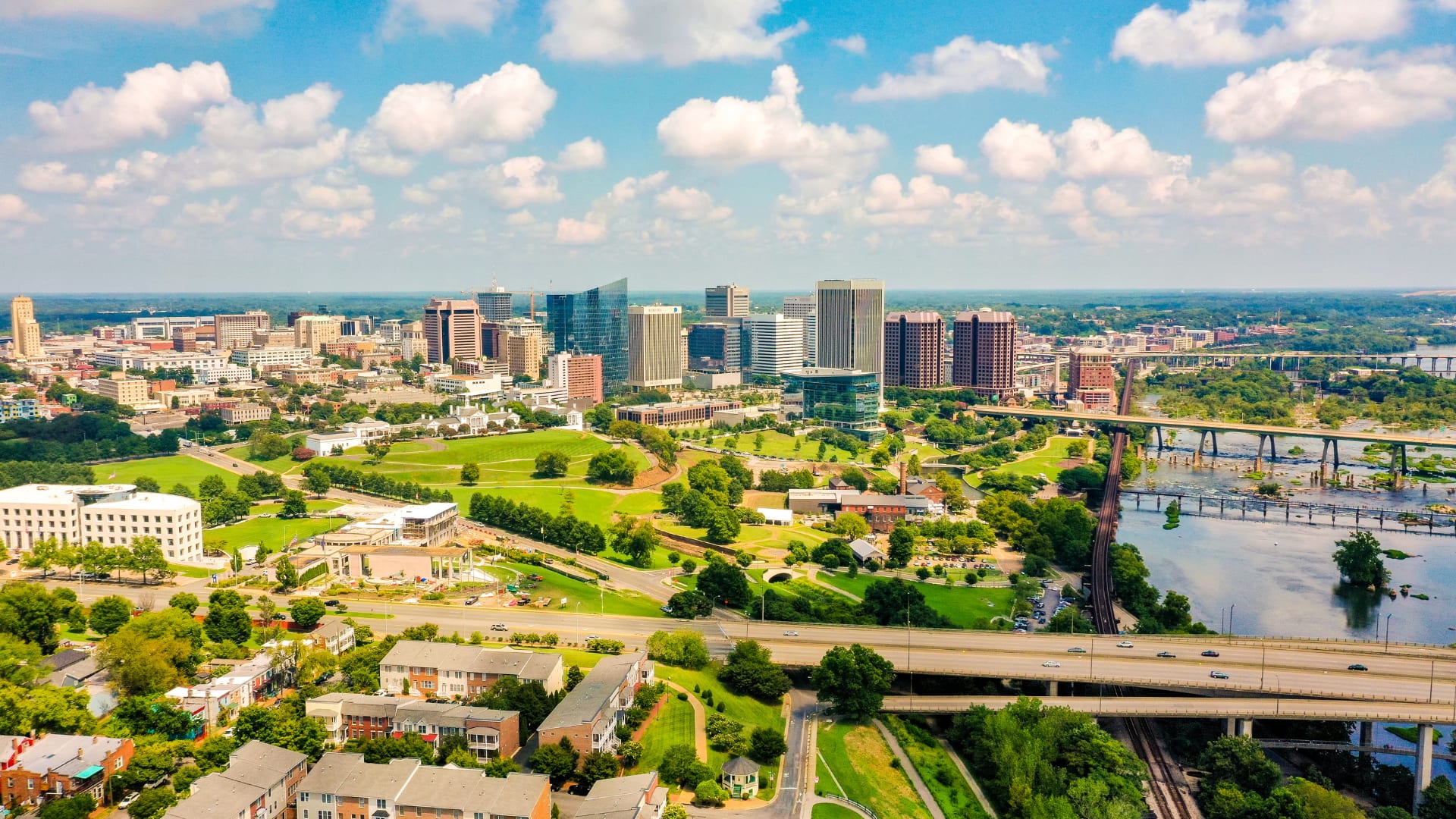Arlington, Virginia, a vibrant suburb of Washington D.C., is home to some of the most desirable neighborhoods in the region. While many are familiar with popular areas like Clarendon and Ballston, there are hidden gems within Arlington VA neighborhoods that offer unique charm and affordability for prospective homebuyers. These lesser-known residential areas provide an opportunity to experience the best of living in Arlington Virginia without the premium price tag often associated with more well-known locations.
For those looking to buy a home in Arlington, exploring these off-the-radar neighborhoods can lead to exciting discoveries. From hilltop havens with stunning views to communities rich in history and character, these areas offer a diverse range of single-family homes and a chance to become part of tight-knit communities. This article will take a closer look at four hidden gem neighborhoods in Arlington VA, each with its own distinct personality and appeal to different types of homebuyers navigating the local real estate market.
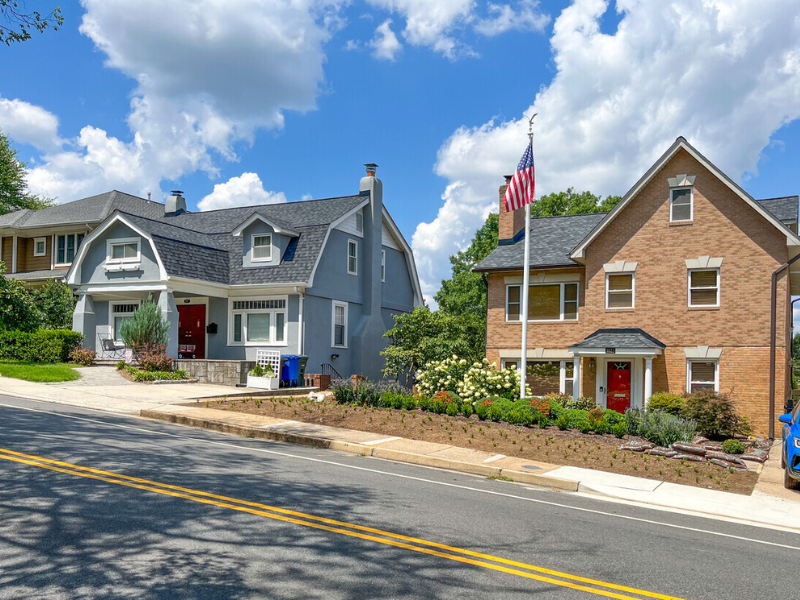
Discovering Arlington Ridge: A Hidden Hilltop Haven
Arlington Ridge, a hidden gem in Arlington VA neighborhoods, offers potential home buyers a unique blend of history, scenic beauty, and architectural diversity. This long, narrow elevation of land extends from Rosslyn southward along the Potomac River, providing residents with a serene retreat close to the heart of Washington D.C.
Historic Significance
Arlington Ridge has a rich history dating back to pre-colonial times. Long before European settlers arrived, Native American tribes thrived along the Potomac River and its tributaries, utilizing the land for fishing, hunting, and agriculture. The area's strategic importance became evident during the Civil War when Fort Scott was constructed on the highest point of the ridge to protect Washington D.C. and the Long Bridge.
The ridge has also been home to several notable figures throughout history. In 1778, John Parke Custis, Martha Washington's son and George Washington's foster son, purchased over 2,000 acres of land in the area. Later, his son George Washington Parke Custis built the Greek Revival mansion known as Arlington House, which became a symbol of Arlington County and is now part of Arlington National Cemetery.
Scenic Views
One of Arlington Ridge's most captivating features is its panoramic views of Washington D.C. and the surrounding areas. The elevated position of the neighborhood provides residents with stunning vistas of the nation's capital, making it a popular spot for photographers and sightseers alike. Prospect Hill, overlooking the Pentagon, offers particularly breathtaking views and has become a significant vantage point for capturing historic moments, including the aftermath of the September 11 attacks.
Architectural Diversity
Arlington Ridge boasts a diverse range of architectural styles, reflecting its long history and evolution. The neighborhood features a mix of historic homes and modern residences, creating a unique and charming streetscape. From the Greek Revival style of Arlington House to the more contemporary designs of recent decades, the area showcases a variety of architectural influences.
One notable example of the neighborhood's architectural heritage is the Hume School, built in 1891. As the oldest remaining school building in Arlington County, it has been repurposed as the Arlington Historical Society and Museum, preserving a piece of local history for future generations.
For potential home buyers, Arlington Ridge presents an opportunity to own a piece of history while enjoying modern amenities. The neighborhood's winding streets, lined with large canopy trees, create a peaceful atmosphere that belies its proximity to the bustling capital. With its combination of historic significance, scenic beauty, and architectural diversity, Arlington Ridge stands out as a hidden hilltop haven in the Arlington VA real estate market, offering a unique living experience for those seeking a blend of tranquility and convenience.
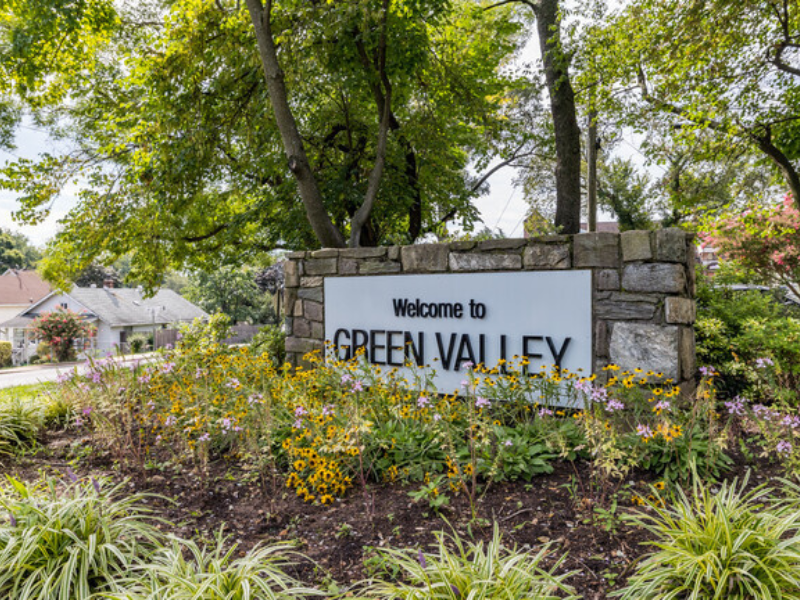
Exploring Green Valley: A Rich African-American Heritage
Green Valley, a hidden gem among Arlington VA neighborhoods, has a rich history deeply rooted in African-American culture. This community, bounded by the Army-Navy Country Club, South 16th Road, Four Mile Run, and South Walter Reed Drive, offers potential home buyers a unique opportunity to become part of a neighborhood with a strong sense of heritage and community spirit.
Historical Background
Green Valley's origins date back to 1844 when Levi and Sarah Ann Jones, free African Americans, established themselves as landowners and built their home in the area. This act laid the foundation for what would become a thriving African-American community. The neighborhood's growth accelerated after the Civil War when former residents of Freedman's Village began moving into the area.
In 1874, John D. Nauck Jr., a Washington D.C. resident, purchased 46 acres of land in the area, subdivided it, and sold lots to other families. This development, coupled with the introduction of the electric railway in 1898, spurred further growth and solidified Green Valley's position as a significant African-American community in Arlington.
Community Culture
Green Valley's rich cultural heritage has been shaped by its residents' resilience and determination. The community has been home to several notable figures, including Grammy-winning singer Roberta Flack and community activist John Robinson Jr., who worked directly with Martin Luther King Jr. In fact, King himself preached a sermon at the local Lomax AME Zion Church in 1963, shortly before delivering his iconic "I Have a Dream" speech in Washington D.C.
The neighborhood's strong sense of community has been fostered through various institutions and initiatives:
- Churches: Four notable churches, including Lomax AME Zion (1866) and Mount Zion Baptist Church (1866), have played crucial roles in community building and social support.
- Education: The first school in Green Valley opened in 1875, evolving over time to become the Drew Model School, a countywide magnet school.
- Recreation: Jennie Dean Park, once a segregated site for Black baseball teams, now features a "history walk" showcasing local Black history.
- Businesses: Local entrepreneurs have long provided essential services to the community, from funeral homes to grocery stores, primarily along the Shirlington Road Corridor.
Modern Developments
While preserving its rich heritage, Green Valley continues to evolve. The County Board established the Nauck Village Center Special Revitalization District in 2004 to encourage balanced development in the area. This initiative aims to provide a mix of housing, recreation, employment, and retail opportunities while maintaining the neighborhood's unique character.
Residents like Portia Clark, head of the Green Valley Civic Association, have been instrumental in preserving the community's identity. Their efforts led to the official recognition of the neighborhood's historic name, Green Valley, rather than Nauck, a name introduced in the 1970s.
For potential home buyers, Green Valley offers a unique blend of history, community spirit, and ongoing development. It presents an opportunity to be part of a neighborhood that values its past while embracing the future, making it an attractive option in the Arlington VA real estate market.
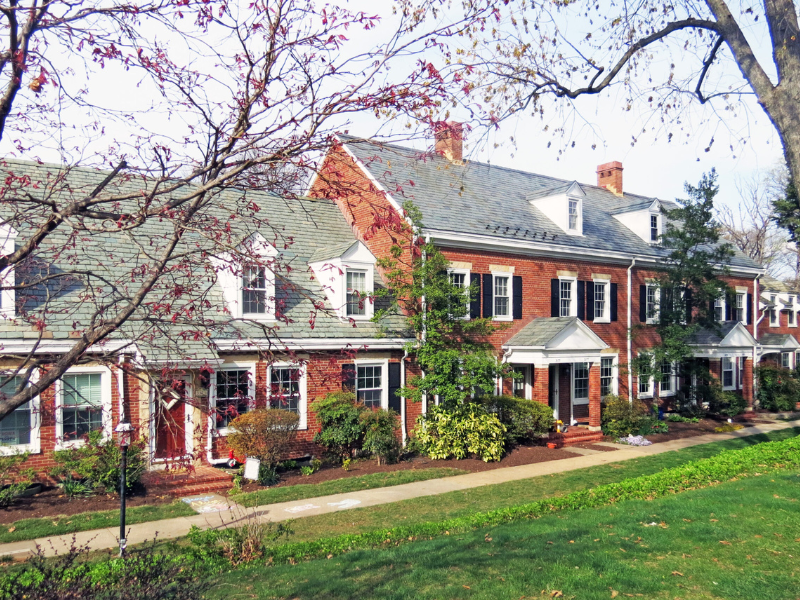
Unveiling Fairlington: From Military Housing to Charming Community
Wartime Origins
Fairlington, an unincorporated neighborhood in Arlington County, Virginia, has a rich history rooted in the nation's wartime efforts. In December 1941, as the United States entered World War II, the Defense Homes Corporation, a component of the Federal Housing Administration, purchased 322 acres of land to construct housing for civilian and military defense personnel. This project, initially called Seminary Heights, was part of President Franklin D. Roosevelt's emergency funding allocation in 1940 to address the housing crunch in Washington, D.C.
The development quickly became the largest project financed by the Defense Homes Corporation and the nation's largest apartment complex at that time. From 1942 to 1944, nearly 3,500 Colonial Revival-style townhouses and apartment units were constructed as permanent rental properties, making Fairlington a significant example of large-scale, publicly financed housing during World War II.
Architectural Character
Designed by Kenneth Franzheim and Alan B. Mills, Fairlington showcases a distinct Colonial Revival style that has stood the test of time. The neighborhood's architecture is characterized by:
- Building heights ranging from 1½ to three stories
- Predominant gable roofs, with some hipped, flat, gambrel, and mansard roofs
- Brick walls laid in five- or six-course American bond
- Six-over-six double-hung sash windows
- Paneled exterior doors with or without lights
- Front entrances sheltered by porches or stoops
The architects paid careful attention to the land's varied topography, creating a site plan with curvilinear streets connecting rectilinear clusters of houses. This thoughtful design, combined with expansive lawns and scattered trees, resulted in a verdant residential community soon after construction was complete.
Modern Amenities
Today, Fairlington offers a blend of historic charm and modern conveniences, making it an attractive option for potential home buyers in Arlington, Virginia. The neighborhood boasts:
- Private swimming pools, tennis courts, and basketball courts for residents
- Walking distance to restaurants, shops, live theater, a movie theater, and grocery stores
- Proximity to the W&OD Trail trailhead and Four Mile Run
- Utah Field Baseball Park and Abingdon Elementary School for recreational activities
- A popular weekly Farmers Market
- Home to the highly sought-after STEM Preschool of Arlington, VA
The Fairlington Community Center, once an elementary school, provides space for various community and recreational activities. Each condominium association within Fairlington maintains its own system of amenities for residents.
Fairlington's enduring appeal is evident in its recognition on both the National Register of Historic Places and the Virginia Landmarks Register. In 2002, the neighborhood received the "Test of Time" award from the Virginia Society of the American Institute of Architects, acknowledging the lasting value of its architectural design.
For potential home buyers, Fairlington offers a unique opportunity to own a piece of history while enjoying modern amenities in a family-friendly, walkable community. Its relative affordability, combined with its proximity to Washington D.C., makes it an attractive option for those seeking a charming neighborhood with a strong sense of community.
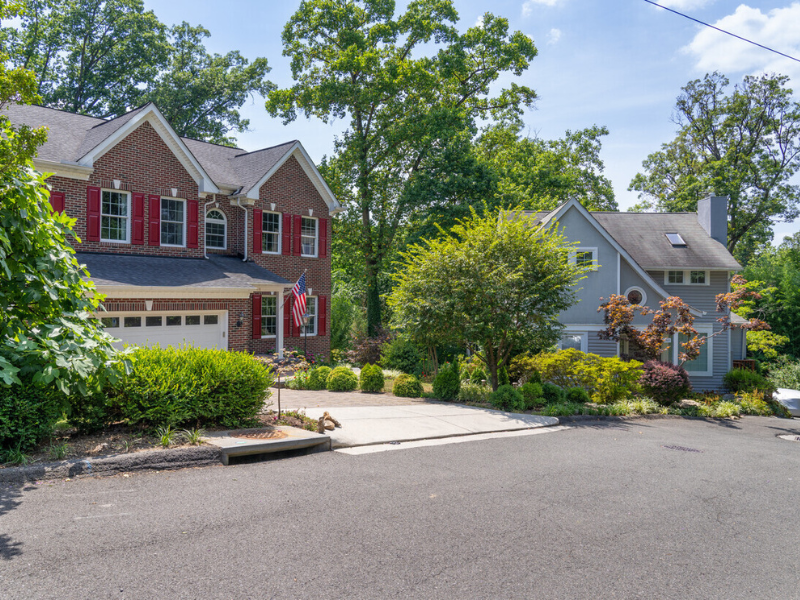
Woodmont: Arlington's Best-Kept Secret
Exclusive Residential Area
Nestled in Arlington, Virginia, Woodmont stands out as a hidden gem among the county's neighborhoods. This small, exclusive residential area has earned a reputation as Arlington's best-kept secret. With a population of just 782 residents, Woodmont offers a unique blend of privacy and luxury that appeals to discerning homebuyers.
The neighborhood is characterized by its large, stately homes set along tree-lined streets. This combination creates a peaceful and private atmosphere, making Woodmont an ideal choice for those seeking a tranquil retreat within close proximity to Washington D.C. The area's exclusivity has made it a sought-after location for potential homeowners looking for a more secluded living experience in Arlington.
The Mysterious Cedars Mansion
One of Woodmont's most intriguing landmarks is the Cedars Mansion, a historic property that has long been shrouded in mystery. Built in the late 19th century, this white colonnaded manse has a rich and colorful history that adds to the neighborhood's allure.
Originally known as the Doubleday Mansion, it was named after Col. William Doubleday and his wife, who built the bulk of the modern house in 1898. The property has changed hands several times over the years, each owner adding to its storied past. Notable residents and visitors have included:
- Railroad builder Richard Harlow
- Celebrities during the 1930s and '40s
- Howard Hughes, leased by Trans-World Airlines
- G. Grant Mason Jr., founder of Pan-American Airways
The mansion's mysterious aura and historical significance contribute to Woodmont's unique character, making it an intriguing destination for history enthusiasts and potential homebuyers alike.
Natural Beauty and Parks
Woodmont's appeal extends beyond its exclusive homes and historical landmarks. The neighborhood boasts an abundance of natural beauty and green spaces, making it a haven for outdoor enthusiasts. Some of the notable natural attractions include:
- Potomac Overlook Regional Park: Offers hiking trails and stunning views of the Potomac River
- Windy Run Park: A 14-acre park with a stream and nature paths, connecting to the Potomac Heritage Trail
- Woodmont Park: Adjacent to Windy Run Park, providing additional green space for residents
These parks and natural areas contribute to Woodmont's serene atmosphere and offer residents ample opportunities for outdoor recreation. The neighborhood's proximity to the Potomac River further enhances its appeal, providing scenic views and additional recreational options.
For potential homebuyers seeking a blend of exclusivity, historical charm, and natural beauty, Woodmont presents an exceptional opportunity. Its status as Arlington's best-kept secret offers a unique living experience that combines the tranquility of a secluded neighborhood with the convenience of urban amenities nearby.
Conclusion
Arlington's hidden gem neighborhoods offer a unique blend of charm, affordability, and community spirit for prospective homebuyers. From the hilltop views of Arlington Ridge to the rich African-American heritage of Green Valley, the historic charm of Fairlington, and the exclusive atmosphere of Woodmont, these areas showcase the diverse living experiences available in Arlington. Each neighborhood has its own personality, providing options to suit various preferences and lifestyles while offering the chance to become part of tight-knit communities.
For those looking to buy a home in Arlington, exploring these off-the-radar neighborhoods can lead to exciting discoveries and potentially more affordable options. These areas provide the opportunity to experience the best of Arlington living without the premium price tag often linked to more well-known locations. For more information about Property Management and Real Estate Services, please feel free to contact us at Arlington Abodes Realty & Property Management. Also, follow me on Facebook for tips and news.
FAQs
1. What are the top neighborhoods to live in Arlington, VA?
Arlington boasts several popular neighborhoods that are great for residents. Some of the best areas include Rosslyn, Colonial Village, Virginia Square, Ashton Heights, Barcroft, Lyon Village, and Shirlington. Each of these neighborhoods offers unique amenities and community vibes.
2. What does 'missing middle' mean in the context of Arlington, VA housing?
The term "missing middle" refers to housing options that are neither single-family detached homes nor large apartment buildings. In Arlington, this includes housing types like duplexes, triplexes, townhomes, and similar structures, which provide diverse living options for residents.
3. Can you explain the Arlington Neighborhoods Program?
The Arlington Neighborhoods Program is a community initiative that allows residents to actively participate in the planning and implementation of projects within their neighborhoods. This program aims to empower citizens by involving them directly in local developments and improvements.
